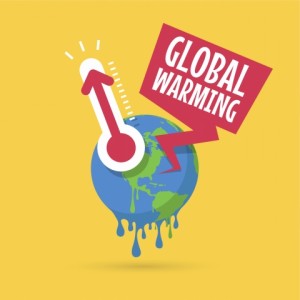Global warming: EESC calls for new tax measures to reduce and remove CO2 from the atmosphere
EESC says, taxes on carbon dioxide emissions will not be enough and a new system is needed to reduce CO2 sufficiently
 The European Economic and Social Committee (EESC) underlines the fact that taxes on carbon dioxide emissions will not be enough to reduce CO2 sufficiently and says that there is a need to adopt a symmetrical approach to taxation that promotes the removal of CO2 from the atmosphere.
The European Economic and Social Committee (EESC) underlines the fact that taxes on carbon dioxide emissions will not be enough to reduce CO2 sufficiently and says that there is a need to adopt a symmetrical approach to taxation that promotes the removal of CO2 from the atmosphere.
New taxes and additional measures on CO2 emissions will help, but will not be sufficient: global warming is likely to continue unless already-emitted CO2 can be taken out of the atmosphere. In the opinion drafted by Krister Andersson and adopted at the July plenary session, the Committee highlights the fact that a new system is needed, whereby CO2 emissions are not only taxed and therefore discouraged, but emissions that are already in the atmosphere can be removed, stored and used for other purposes.
Commenting during the plenary, Mr Andersson said: It is important to use taxation to reach Europe’s climate neutrality goals, but there is a need for additional tools. It would be efficient if, as well as being able to reduce CO2 emissions, we could also remove CO2 from the atmosphere. This is why we are calling for a symmetrical taxation approach based on this strategy: tax revenues from CO2 taxes could be used to compensate activities that remove CO2 from the atmosphere.
The EESC also recommends developing, through dedicated investments, new technologies at EU and national level, allowing for carbon capture and storage (CCS) as well as carbon capture and utilisation (CCU). These measures would be a further step towards reducing the impact of CO2 emissions, thereby adhering to the sustainable development goals of the UN and the Paris Agreement on climate change.
The Committee also points to land management practices which should be encouraged and supported, in the EU and in the Member States, such as focusing on forests. Expanding, restoring and correctly managing forests can leverage the power of photosynthesis to tackle CO2 and should be compensated by applying a negative tax rate.
Forests remove carbon dioxide naturally and trees are especially good at storing carbon removed from the atmosphere. In any case, whether it is new technologies or other practices, measures should be symmetrical, efficient and implemented in a way that is socially acceptable for everybody.
According to the EESC, global warming must be addressed worldwide, comprehensively and symmetrically, taking into account current levels of CO2 in the atmosphere. It would be useful to establish rules within the EU and, on this basis, embark on international discussions with other trading blocs. In future, in order to achieve an effective, symmetrical policy framework to tackle the increasing amount of CO2, new taxation measures could be put forward to supplement the current emissions trading system and national carbon taxes.
The approach followed by the European Commission in The European Green Deal with the European emissions trading system (ETS) seems to be going in the right direction and making good progress in establishing more effective carbon pricing throughout the economy. The ETS is based on the “cap and trade” principle, according to which a cap is set on the overall amount of certain greenhouse gases that can be emitted. The cap is reduced over time, forcing total emissions to decrease.
Within the limits of the cap, companies subject to the system receive or buy emission allowances, which are tradable as needed. Such a tool should be coordinated with other, additional instruments, including a new approach to taxation in a coherent policy framework, as well as with other, similar tools implemented in other regions throughout the world.
Source: EESC, press release, 2020-07-16.
